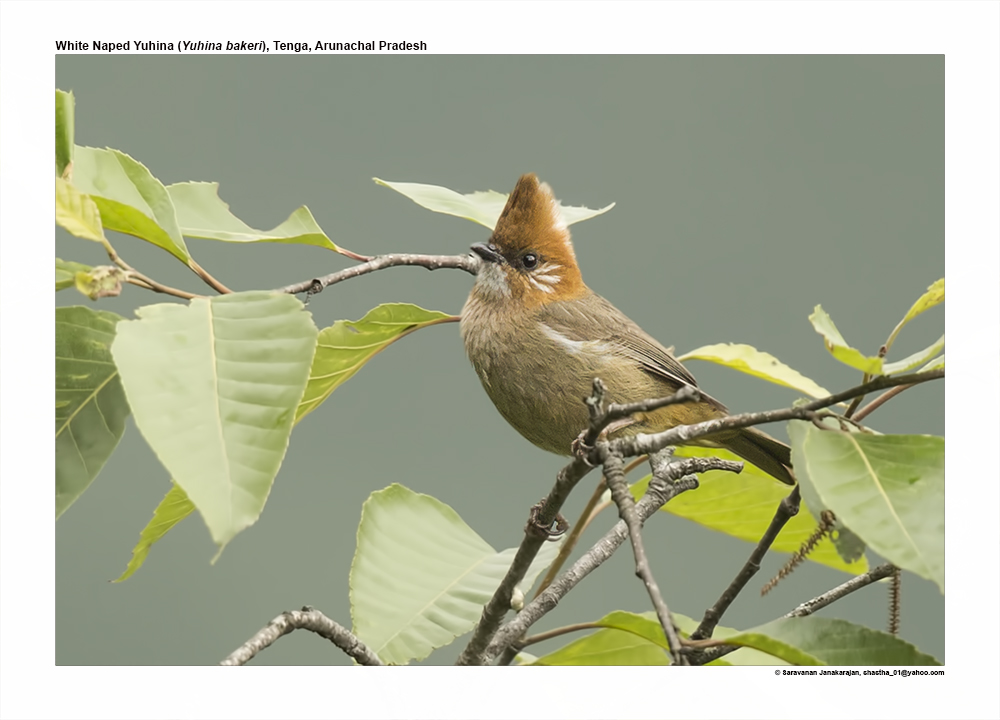White-naped Yuhina

White-naped Yuhina Yuhina bakeri
Etymology:
- Yuhina : Named after “Yuhinof the Nipalese”
- Bakeri : named after British ornithologist Edward Charles Stuart Baker (1864–1944)
Vernacular Names: Lepcha: Temgyeng-pho, Turringing-pho
Distribution in India:Resident of Eastern Himalayas and North Eastern hills in India.
Description: Size 12–13·5 cm; wt. of 14–24 g. It is stout-billed Yuhina with rufescent-brown head, white nape and throat, silvery-streaked ear-coverts and strong crest. The crown, lower nape, neck side and mantle are dull rufous-brown, feathers of crown are elongate and erect, upper nape is broadly white-tipped;. The upperparts are drab mid-brown with dark greyish-olive cast, upperwing and tail are browner. The lores are blackish-brown, ear-coverts are plain rufous-brown with broad silvery-whitish streaks, area under eye is dull rufous- brown, submoustachial is dull rufous- brown with whitish flecks; chin and throat are whitish with very vague dark marks, merging to slightly pinkish-tinged buff with vague long dark streaks on breast,. The flanks are drab buffish-olive, central belly is whitish, lower belly, thighs and undertail-coverts have a yellowish-tan; iris is reddish-brown to yellowish-brown; bill is dark brown to black; legs are dull olivaceous to brown. Both the sexes are similar. The juvenile has browner mantle, underparts are paler with less distinct streaks.
Habitat: It is found in primary and secondary broadleaf evergreen forest. It is found from 300m up to 2200 m.
Food habits: It eats beetles, wasps and other insects, berries, flower nectar,seeds and sugar-rich sap from bark.It is usually found in small parties, often in association with mixed feeding flocks which may contain other small babblers. It forages in treetops and bushes.
Breeding habits: They breed in Apr–Jun. The nest is built by both sexes. The nest is a a cup-shaped or dome-shaped structure of moss mixed with dead leaves, roots and bits of bracken, lined with fine rootlets, placed low down in bush, in hollow in bank or against moss-covered tree trunk. They lay a clutch of 3-4 eggs. The incubation is done by both sexes. The incubation period is for 13–14 days. The young are provisioned by both sexes.